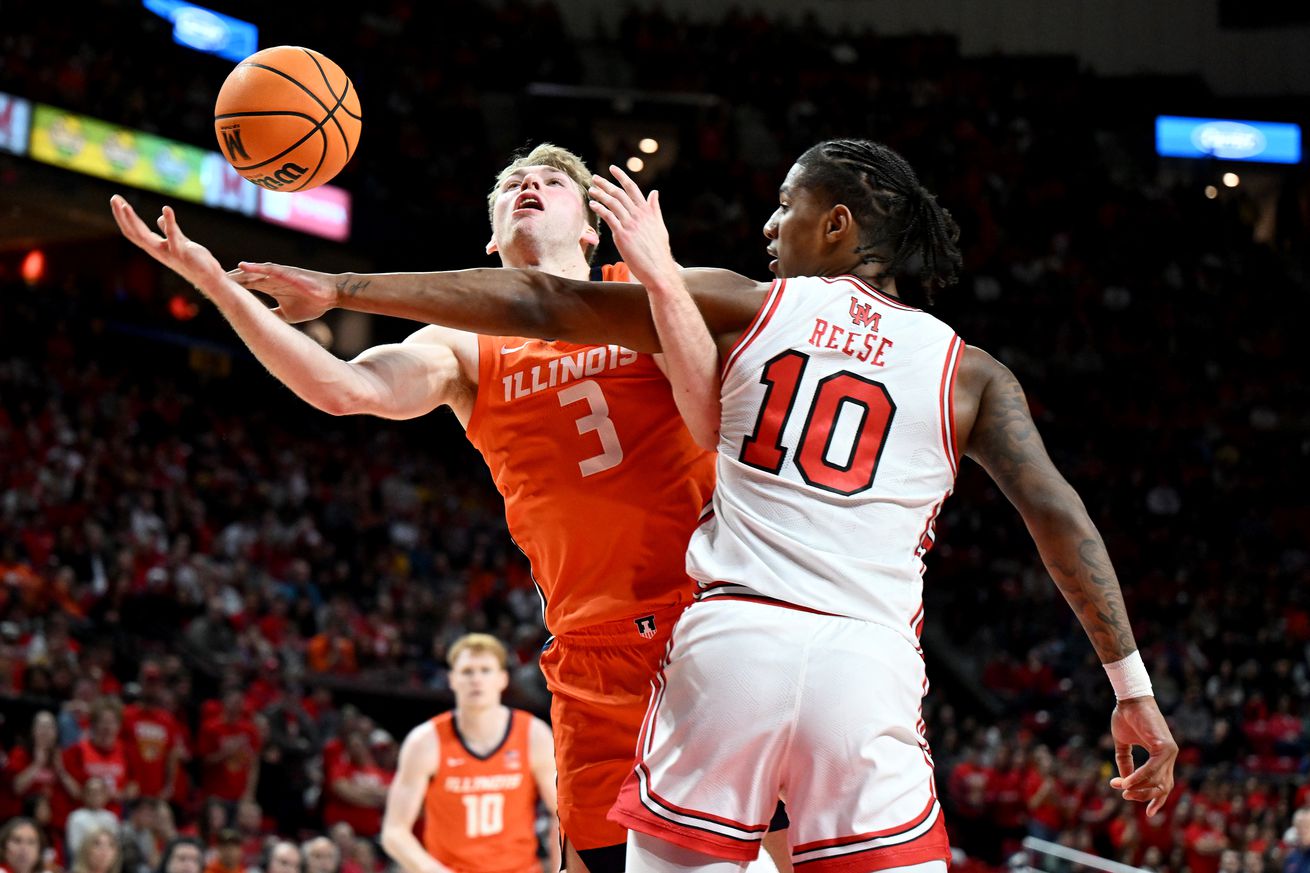
Catch up on some key points from Saturday’s game.
Maryland men’s basketball lost to No. 14 Illinois, 85-80, on Saturday. It was likely the last opportunity the Terps will have against a ranked opponent with their season winding down, and the Fighting Illini avenged a home loss to Maryland earlier in the season.
Here are three takeaways from the game.
The Terps were playing with heavy hearts
It was a somber Saturday in College Park leading up to the game. Legendary Maryland coach Lefty Driesell, who helped elevate the program to national prominence in the 1970s and 1980s, passed away in the morning at age 92.
As soon as the news broke, those who played for, coached against and knew Driesell immediately flooded social media with fond memories of the massively accomplished coach. Fans rushed to share their tales of what Driesell and his teams meant to them, putting on display his immense importance to the rich college basketball scene in the region.
Prior to the game, during a moment of remembrance, the nearly 18,000 fans in attendance held two fingers to the air, a tribute to Driesell’s signature “victory sign” that he would raise throughout his decorated career.
The Terps couldn’t pull off the upset, but they showed heart in throwback uniforms akin to those from the Driesell era. Fittingly, the 1984 Maryland squad that Driesell guided to an ACC championship was in attendance and honored at halftime.
A reversal of usual trends
Maryland’s season has generally been defined by outstanding defense being laid to waste by subpar offense. But on Saturday, that was reversed, with the Terps putting forth a strong offensive effort but being picked apart on defense.
Maryland allowed 85 points — the most it’s allowed this season — as the Fighting Illini found a recipe for success on the offensive end. The Terps’ usually stingy defense allowed at least 40 points in both halves, and Illinois’ dynamic duo of Terrence Shannon Jr. and Marcus Domask torched the home team to the tune of 46 combined points. Coleman Hawkins and Justin Harmon also scored in double figures.
The Terps’ offense was surprising in its efficacy. For the most part, they avoided the lengthy scoring droughts that have plagued them for much of the year, and they avoided turnovers at a much better rate than usual. Additionally, the trio of Jahmir Young, Julian Reese and Donta Scott scored a combined 63 points.
Still, it wasn’t enough. When Maryland is making shots — especially at home — it usually translates that into plenty of forced turnovers when applying full-court pressure and riding its momentum to the other end. But that didn’t happen Saturday, with the Fighting Illini doing well to navigate the environment.
Maryland has proven it has the ability to play well on both ends of the court, but it’s been unable to string together consistent showings of both offense and defense at the same time.
The referees gave their whistles a workout
Officials don’t determine the outcomes of games nearly as frequently as it sometimes seems. The result of Saturday’s game wasn’t determined by officiating, but there’s no doubt that the referees were forced into the spotlight by the nature of the contest.
In a physical, hard-nosed Big Ten game, Maryland and Illinois shot a combined 65 free throws. And it could have been more — after the game, Maryland head coach Kevin Willard said that he felt as though Young was fouled far more often down the stretch than he got credit for.
Even so, Young shot and made 11 free throws, continuing his habit of earning trips to the charity stripe by attacking the rim and drawing contact. He was only bested in that regard by Shannon, who shot 16 free throws and made 14.
Also notable was Reese converting on six of his seven free-throw attempts. In recent games, he’s struggled from the line in key spots, but he had no such issue Saturday.
With neither team hitting consistently from outside — Maryland shot 22% from three while Illinois shot 25% — they had no choice but to initiate and finish offense in the interior. It put pressure on the officials and in some regards turned the game into a free-throw shooting contest. Illinois making eight more free throws ended up being the difference on the scoreboard.
